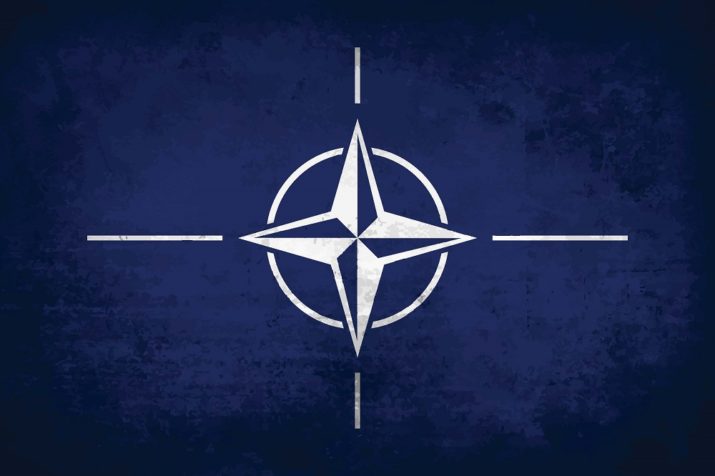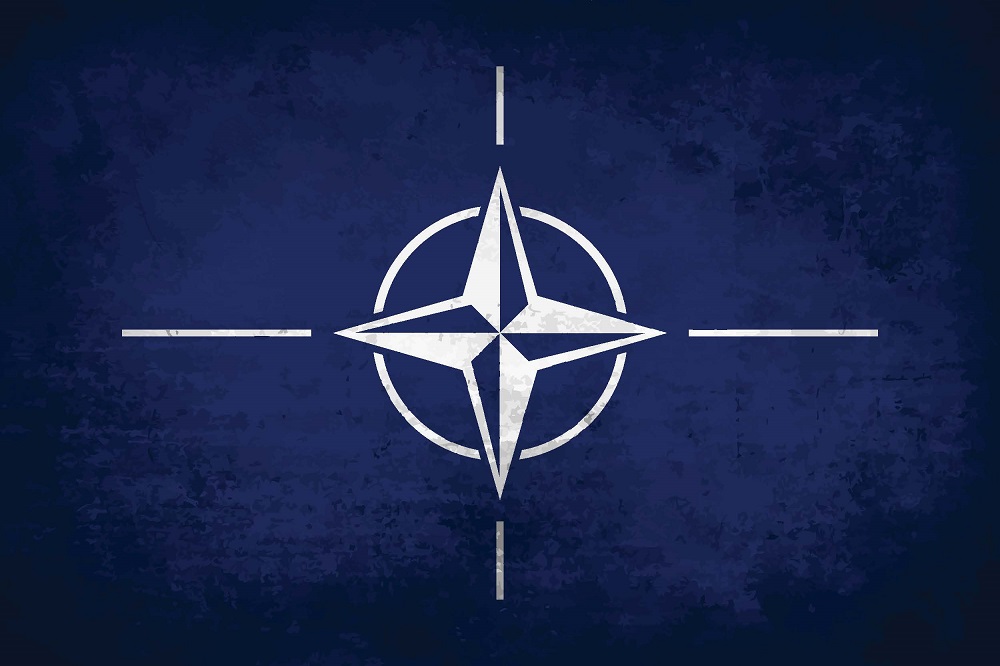
US-EU Relations in the 21st Century: A Multidisciplinary Analysis of Transatlantic Affairs

This is part of our special feature on Nationalism, Nativism, and the Revolt Against Globalization.
Course theme
Europe and North America have deep common roots. While countries today on both sides of the Atlantic reflect the influence of global culture and migration, a web of historic connections, shared traditions and mutual interests provides the basis for ongoing transatlantic cooperation. This cooperation has been the driving force behind the development of a framework for international order since the end of World War II. The framework is now being challenged as a result of rapidly shifting national and global political, economic and cultural forces. Transatlantic relationships and structures in the 21st century will play a major role in determining the viability of any ongoing or new form of international order.
Course Description
The course will explore the origins of transatlantic cooperation and the creation of common European economic and political structures, notably the European Union (EU), and the development of transatlantic security alliances, particularly the North Atlantic Treaty Organization (NATO). It will compare constitutional governance in the differing federal systems of the US and the EU, explore centrifugal forces that are testing the sustainability of the EU, and examine the populist and nationalist political movements and neo-authoritarian tendencies that are challenging liberal democracy on both sides of the Atlantic. Areas of economic cooperation and tension will be studied, including the financial crisis, international trade and regulatory affairs, and the negotiation of transatlantic trade and investment partnerships. The course will also take up cooperative and conflicting policies of transatlantic partners in addressing security problems of terrorism, including the relationship of Russia, Ukraine and countries to the east and south with evolving transatlantic security, economic and political structures.
US-EU Relations in the 21st Century will be a required course for students enrolled in the new Master of Arts in Transatlantic Affairs program offered jointly by the Fletcher School and the College of Europe at Bruges.
The course is designed to introduce students to the substance and dynamics of transatlantic affairs in both the US and the EU. The class will examine institutional structures and the political forces affecting them. Students will debate choices that confront US and European officials in building these structures and responding to these forces. Students will develop an understanding of the dynamics of the issues studied; acquire knowledge of the options considered by decision-makers; be exposed to the political environment and pressures under which policymakers make their decisions; and study the interaction among politics, economics, security, law and culture in shaping transatlantic relations.
The course will be taught by John Shattuck, Professor of Practice in Diplomacy, and other members of the Fletcher and College of Europe faculty.
Historical Issues
Session 1
Course Introduction and Overview; History of the European Project and the Atlantic Alliance. Alan Henrikson and John Shattuck
Readings:
– Monnet, Jean, Memoirs, Chapter 12, “A Bold Constructive Act (1949-50)” (1978);
– Monnet, Jean, Mémoires, XII, “Une action profonde, reélle, immediate…” (1976).
– Henrikson, Alan, “Historical Forms of US-European Cooperation: Combination or ‘Only’ Coordination?,” European Foreign Affairs Review, 21, no. 3 (August 2016), pp. 329-356.
– Henrikson, Alan, “The Creation of the North Atlantic Alliance,” Naval War College Review, 32, no.3 (May-June 1980), pp. 296-323.
Questions:
– Is “the Atlantic world” one community or two (or even more, including, e.g., a British one)?
– Was the Coal and Steel Community (Schuman Plan) more a political project than a program of economic integration? If so, how did this emphasis influence the evolution (function, size, membership, etc.), and perhaps even some of the problems, of the European Union?
– What, exactly, was “the Monnet method”? What were its advantages, and the results of its use? Its limitations, possible disadvantages and adverse consequences?
– Who were, in Europe and the United States, the leading “Atlanticists” and “Europeanists”? Their differences in outlook and in strategy? Was there cross-Atlantic collaboration between them?
– Were there alternatives to the North Atlantic Treaty (Organization)? What were they? Who proposed the alternative ideas? Were these ideas seriously considered? Are they at all relevant in transatlantic security policy today?
Session 2
Foundation of postwar transatlantic relations – Yalta, Marshall Plan. John Shattuck and Alan Henrikson
Readings:
– “The Yalta Conference, February 1945,” A Decade of American Foreign Policy: Basic Documents, 1941-49. Prepared at the request of the Senate Committee on Foreign Relations.
– DeParle, Jason, “The Bitter Legacy of Yalta: Four Decades of What-if’s,” The New York Times, November 26, 1989.
– Brzezinski, Zbigniew, “The Future of Yalta,” Foreign Affairs, 63, No. 2, winter, 1984, pp. 279-302.
– Truman Speech to a Joint Session of Congress, 1947.
– Gaddis, John Lewis, “Reconsiderations: Was the Truman Doctrine a Real Turning Point?,” Foreign Affairs, Vol. 52, No. 2, January 1974, pp. 386–402.
– Frazier, Robert, “Kennan, ‘Universalism,’ and the Truman Doctrine,” Journal of Cold War Studies, Vol. 11, Issue 2, spring 2009, pp. 3–34.
– Marshall, George C., Speech at Harvard Commencement, June 5, 1947.
– Truman, Harry S., “Special Message to Congress on the Marshall Plan,” December 19, 1947,online by Gerhard Peters and John T. Woolley, The American Presidency Project.
– McFarland, Kelly M., “The Marshall Plan Turns 70 This Week: Here are four reasons it was so important,” Washington Post, June 5, 2017.
– Steil, Benn, “The Marshall Plan and ‘America First’,” Project Syndicate, August 4, 2017.
Questions:
– How did the US move from prewar isolationism to postwar internationalism?
– What was Roosevelt’s vision of a postwar world order and how did this affect the US negotiating strategy at Yalta?
– What were the issues discussed at Yalta and the results? How were these perceived at the time? After the fact?
– How did postwar US-Soviet relations deteriorate into a “cold war” division of Europe?
– What was the Truman Doctrine? How did it evolve into a “containment” strategy, and what were its short and long-term consequences?
– What were the origins of the Marshall Plan and the revival of Western Europe?
– How did US dominance shape the development of transatlantic relations during the early Cold War?
Legal Issues
Session 3
Comparative federalism in the EU and the US; how US and EU legal structures for transatlantic relations work. John Shattuck, Michael Glennon and Olivier Costa (College of Europe)
Readings:
– Glennon, Michael J. and Sloane, Robert D., Foreign Affairs Federalism: The Myth of National Exclusivity (2016), pp. 1-76; 147-160.
– Murphy, Sean, Principles of International Law (West, 2nd ed., 2012), pp. 223-253.
– United States Constitution.
– Auer, Andreas, ‘The Constitutional Scheme of Federalism’, Journal of European Public Policy, vol. 12, no. 3, 2005, pp. 419-31.
– Olivier Costa et Paul Magnette, “The European Union as a consociation? A methodological assessment,” West European Politics, vol. 26, no. 3, July 2003, p. 1-18.
– Benson, David, and Andrew Jordan, “Exploring the Tool-kit of European Integration Theory: What Role for Cooperative Federalism?,” Journal of European Integration, vol. 33, no. 1, 2011, pp. 1-17.
– Genschel, Philipp and Jachtenfuchs, Markus, “More integration, less federation: The European integration of core state powers,” Journal of European Public Policy, vol. 23, 2016, Issue 1, pages 42-59.
– Müller, P. (2016), “EU foreign policy: no major breakthrough despite multiple crises,” Journal of European integration, 38(3), 359-374.
Questions:
– EU or national policy-makers who engage with government in the United States deal with any of four institutional entities: the Executive Branch, the Congress, the federal courts, or the states (or cities). In each of those four instances, the same question arises: What are the foreign affairs powers of these entities, and what are the limits on those powers? What, specifically, is the effect on those powers and limits of each of the following:
– The text of the United States Constitution?
– Applicable judicial doctrine interpreting that text?
– Relevant historical custom and practice?
– The functional attributes and capabilities of that entity?
– Why do we say that the EU is not a federation? Is a “federal system” the most suitable model to characterize the EU?
– Why are the main EU competences focused on “non-sovereign” issues?
– Does the rise of Euroscepticism challenge any possibility of an integrated EU policy towards transatlantic relations?
– How do EU and member states competences articulate regarding transatlantic relations?
Political Issues
Session 4
Failed states, human rights wars and the European refugee crisis. John Shattuck and Elizabeth Promodrou
Readings:
– Shattuck, John, Freedom on Fire: Human Rights Wars (Harvard University Press 2003), Introduction, pp. 1-21.
– Clarke, Walter and Herbst, Jeffrey, “Somalia and the Future of Humanitarian Intervention,” Foreign Affairs, March/April 1996, pp. 70-85.
– Holbrooke, Richard, “America, Europe and Bosnia,” in To End a War (New York 1999), pp. 358-369.
– Mazarr, Michael, “The Rise and Fall of the Failed State Paradigm,” Foreign Affairs, January/February 2014, pp. 113-121.
– Lynch, Marc, “Obama and the Middle East,” Foreign Affairs, September/October 2015, pp. 18-27.
– Greene, Meghan and Keleman, R. Daniel, “Europe’s Failed Refugee Policy,” Foreign Affairs, June 2016.
– Betts, Alexander, “State Fragility, Refugee Status and ‘Survival Migration’,” States of Fragility (May 2013), pp. 4-6.
– Lahav, Gallya. “The Global Challenge of the Refugee Exodus,” inCurrent History (January 2016), pp. 10-16.
– Zaragoza-Cristiani, Jonathan, “Porous Borders and EU Dependence on Neighbor Countries,” January 2016.
– Mazzucelli, Colette, Visvizi, Anna, and Bee, Ronald, “Secular States in a ‘Security Community’: The Migration-Terrorism Nexus?,”Journal of Strategic Security, Vol. 9., No. 3 (2016), pp. 15-27.
– Farahat, Anuscheh, and Markard, Nora, “Forced Migration Governance: In Search of Sovereignty,” German Law Journal, No. 6 (2016), pp. 923-947.
Questions:
– What were the causes and manifestations of post-Cold War “forces of disintegration,” such as failed states, ethnic conflict and increased terrorism?
– What has been the impact on Europe and the United States of failed state conflicts (e.g. Somalia, Rwanda, Bosnia)?
– What were the costs and benefits of humanitarian intervention and state-building as a response to these conflicts by the transatlantic partners (e.g. Dayton Peace Process)?
– Was there a post-9/11 paradigm shift away from multilateralism toward unilateralism in the US response to the forces of disintegration, and what were the consequences of this shift for US leadership, Middle East stability and transatlantic relations?
– How should we frame the European refugee crisis? What are the migration implications of state fragility and failure in Europe’s southern and eastern neighborhoods?
– How does religion relate to migration flows into Europe? What are the causes and consequences of the securitization of religion in response to increased migration in terms of terrorism, policing and adherence to the rule of law?
– How are mixed migration flows reshaping the human rights regimes of EU member states? What has been the impact of increased migration on democratic governance in Europe?
Session 5
Centrifugal forces and populist-nationalist challenges to liberal democratic governance in Europe and the US. John Shattuck
Readings:
– Mudde, Cas, ”Europe’s Populist Surge,” Foreign Affairs, October 2016
– Inglehart, Ronald F. and Norris, Pippa “Trump, Brexit, and the Rise of Populism: Economic Have-Nots and Cultural Backlash,” HKS Faculty Research Working Paper Series RWP16-026, August 2016, pp 1-16.
– Hochschild, Arlie, Strangers in Their Own Land (The New Press 2016), Chapter 9, pp. 135-151.
– Krastev, Ivan, “The Unraveling of the Post-1989 Order,” Journal of Democracy, October 2016, pp. 5-15.
– Shattuck, John, “Resisting Trumpism in Europe and the United States,” The American Prospect, December 2016.
– Malhotra, Dipak, “A Definitive Guide to the Brexit Negotiations,” Harvard Business Review, August 2016.
– Foa, Roberto Stefan and Mounk, Yascha, “The Danger of Deconsolidation,” Journal of Democracy, July 2016, pp. 5-17.
– Mounk, Yascha, “The Past Week Proves That Trump Is Destroying Our Democracy,” New York Times, August 1, 2017.
– Colgan, Jeff D. and Keohane, Robert O., “The Liberal Order is Rigged: Fix It Now or Watch It Wither,” Foreign Affairs, May/June 2017.
– Verhofstadt, Guy, “Speak Up for Europe and Win,” New York Times, May 2017.
– Greco, Ettore, “A Union at Risk: The Future of the European Project,” Council of Councils, Council on Foreign Relations, June 2017.
Questions:
– What is populism? How does it relate to nationalism? Authoritarianism? Liberal democracy?
– Was there a post-1989 “liberal transatlantic order”? If so, what has happened to it?
– How are economic and cultural factors (e.g. financial and migration crises) stimulating populism and challenging liberal democracy?
– What are the models and tactics of “illiberal governance”?
– How great are the dangers of EU disintegration and democratic deconsolidation?
– Are there sources of resilience for liberal democracy in Europe and the US?
– What are the prospects for rebuilding a liberal transatlantic order?
Economic Issues
Session 6
The financial crisis and its transatlantic effects. George Alogoskoufis and John Shattuck
Readings:
– Blinder A. S. (2013) After the Music Stopped: The Financial Crisis, the Response and the Work Ahead, New York, Penguin (Chapters 1 and 16 are required) (available on Ginn reserve).
– Baldwin R. and Giavazzi F. (2015), The Eurozone Crisis: A Consensus View of the Causes and Some Possible Solutions, London, CEPR.
– Baldwin R. and Giavazzi F. (2016), How to Fix Europe’s Monetary Union: Views of Leading Economists, London, CEPR.
Questions:
– How did the US get into the financial crisis and why?
– What were the policy responses to the crisis?
– Were the policy responses to the crisis sensible, coherent and well justified?
– Which were the policy reforms adopted in response to the criisis?
– Were the policy reforms well or poorly designed in order to create a sturdier financial structure?
– How was the financial crisis transmitted across the Atlantic?
– What were the main fault lines of the Euro Area revealed by the financial crisis?
– In what ways did the crisis and the policy responses differ in the Euro Area?
– Are the policy reforms adopted in the Euro Area adequate?
– Is the Euro Area crisis over?
– What were the similarities and differences in the US financial crisis and the Euro Area financial crisis?
Session 7
US-EU cooperation and competition in international trade and regulatory affairs; Negotiations over the Transatlantic Trade and Investment Partnership. Joel Trachtman and John Shattuck
Readings:
– Hertogen, An, “Sovereignty as Decisional Independence over Domestic Affairs: The Dispute over Aviation in the EU Emissions Trading System,” Transnational Environmental Law, Vol. 1, no.2, October 2012, pp. 281-301.
– Johnson, Renee, “The EU-US Beef Hormone Dispute,” S. Congressional Research Service (2015).
– Simon Lester, “One Year into the TTIP Negotiations: Getting to Yes,” Cato Free Trade Bulletin 59 (2014).
– Matteo Scotto, “The Transatlantic Trade and Investment Partnership: An Insight Into its Transatlantic Relations and Global Context,” ZEI Discussion Paper C238 (2016).
Questions:
– How does the EU make decisions about international trade relations with “third countries?” Is there a “democracy deficit?”
– How do the EU and US regulatory perspectives or regulatory policies differ? Why do they differ? Would it be attractive to reduce those differences in order to promote free trade? Under what circumstances?
– How does the WTO mediate US-EU trade policy and regulatory policy differences?
– How would the TTIP change the US-EU relationship; how would it change the approach to mediating trade policy and regulatory policy differences? What are the benefits, and what are the risks?
Security Issues
Session 8
Eastern relations: Russia and Ukraine. Chris Miller and John Shattuck
Readings:
– Putin, Speech to the Munich Security Conference, 2007.
– Putin, Speech on Crimea, March 18, 2014.
– Putin, Speech to the Valdai Discussion Club, October 24, 2014.
– Putin, Speech to the United Nations 2015.
– Speck, Ulrich, “The West’s Response to the Ukraine Conflict: A Transatlantic Success Story,” Transatlantic Academy, 2015-16 Paper Series, no. 4.
– Moravcsik, Andrew, “Lessons from Ukraine: Why a Europe-led Geo-economic Strategy is Succeeding,” Transatlantic Academy, 2015-16 Paper Series, no. 10
– Lukyanov, Fyodor, “The Spirit of the Cold War is Back as NATO Confronts Russia,” The Huffington Post, 15 July 2016.
– Karaganov, Sergei, “New Ideological Struggle?,” 21 April 2016.
Questions:
– Why did the war in Ukraine begin? What factors have shaped its development since 2014?
– Which parties, if any, have achieved their objectives in Ukraine?
– What other factors obstruct relations between Russia, the U.S. and the E.U.
– To what extent do U.S. and European interests in Ukraine and Russia overlap? In what ways do they diverge?
– How does Russia understand the relationship between the U.S. and the E.U. and between the E.U. and its member states?
Session 9
NATO and transatlantic security cooperation. James Stavridis and John Shattuck
Readings:
– Stavridis, James G., The Accidental Admiral : A Sailor Takes Command at NATO, Chapter 4, “Libya: Qaddafi’s last stand,” 2014;
– Stavridis, ibid., Chapter 14, “NATO: Quo Vadis?”
– Daalder, Ivo H. and Stavridis, James G., “NATO’s Victory in Libya: The Right Way to Run an Intervention,” Foreign Affairs, March 2012.
– Bellamy, Alex J, “Libya and the Responsibility to Protect: The Exception and the Norm.”Ethics & International Affairs, 25 No. 3, 2011, pp. 263-269.
– Mattelaer, Alexander, “Revisiting the Principles of NATO Burden-Sharing,” The US Army War College Parameters, Volume 46, Nº 1, Spring 2016
– Bracknell, Butch, “NATO Approaches to ISIL and International Terrorism,” International Lawyer, Winter 2016.
– Frolich, Stefan, Coffey, Luke, Neubauer, Sigurd, “NATO’s Northern Alliance,” Foreign Affairs, March 2017.
– Bugajski, Janusz, “Only NATO Can Defend Europe,” Center for European Policy Analysis, March 2016.
Questions:
– What is the mission of NATO in the 21st century, and what is NATO’s role in transatlantic relations?
– What was the rationale for NATO expansion, and what has been the impact of expansion on transatlantic and geopolitical relations?
– How was the Libya intervention carried out? What were the results? What are the lessons for future NATO operations?
– What is the conceptual framework for addressing the issue of burden-sharing among NATO members?
– What is the relationship between NATO strategic planning, and defense and security planning by the US and the EU?
Click here to read a full interview with John Shattuck.
Published on February 1, 2018.




